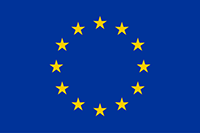I am looking for information as
Researcher

Industry

Patient

EBW19 Keynote Interview with Olli Kallioniemi, Director of the Swedish SciLifeLab
As keynote speaker of the Europe Biobank Week 2019, Olli Kallioniemi talked about research successes, which he was able to achieve by using multilayer profiling. Kallioniemi is Director of the Science for Life Laboratory (SciLifeLab), a national infrastructure for life sciences in Sweden, and a Professor for Molecular Precision Medicine at the Karolinska Institutet. Previously, he headed the FIMM Institute of Molecular Medicine Finland at the University of Helsinki. Kallioniemi’s research group focuses on individualised systems medicine, with an emphasis on improving diagnosis and treatment of leukemia, prostate and ovarian cancer. In an interview with BBMRI-ERIC’s German Biobank Node (GBN), Olli Kallioniemi speaks about the challenges for biobanks to meet the requirements of advanced research methods.
Research largely depends on biobanking. What chances and limits does that implicate for research today?
Olli Kallioniemi: There are a lot of aspects related to this question: Setting up and maintaining professional biobanking is expensive – sustainable funding is difficult to achieve. Furthermore, the average scientist needs to have a lot of education and experience, time and money to get through the jungle of ethical, legal, and other administrative challenges to carry out research. Obviously, opportunities for beautiful discoveries await, but scientists are often not patient enough nor are funding agencies. So it takes a lot of effort to get a sustainable wide-spread biobanking and data management efforts underway.
At the SciLifeLab you are concerned with the latest research methods. Can you give us an example of how you think biobanking should evolve accordingly?
Kallioniemi: One example for the recent progress concerns single cell technologies that often require fresh or living cells to be isolated and stored from tissues and blood. This is fundamentally more challenging to do systematically than isolating DNA from cells and tissues or banking plasma samples for example. Similarly, when we talk about the microbiome of any organ, this may require single cell microbial investigations in the future.
How much can individual biobanks contribute and what role do infrastructures/biobank networks play?
Kallioniemi: I think that we need specialised biobanks that focus on new developments and opportunities on the one hand and on the other that it is necessary to pave the way for generalised large-scale biobanks. This is also important to sort out hurdles such as quality control in preprocessing, isolation, storage, and transport.
The development of research methods is fascinating. At the moment, however, we, as a biobank network, are still dealing with some basic questions: How do you think we can prevent researchers from setting up their own freezers and use quality-assured biobanks instead?
Kallioniemi: We can probably never prevent researchers from doing things that they want to do, but we can build enticements to make use of biobanks. Such as working through the jungle of permissions mentioned above. Make the biobanks attractive, up-to-date and affordable. And yes, I fully know that this is easy to say, but much harder to realise in practice.
In future, how can the connection between biobanks and infrastructures such as the SciLifeLab be more successful? How is this being handled in Sweden and Finland?
Kallioniemi: In my opinion, we need intense collaborations across infrastructures to make sure that biobanks are available for new technologies and new technologies are available to be applied to biobanked materials. I am not sure if there is an ideal model, but there have been EU-funded efforts to connect the European ESFRI infrastructures in life science, as well as similar national collaborations. However, maybe one should specifically address the question, how to evolve biobanks and new technologies in a coordinated fashion and how to address the challenges ahead.
The interview was conducted by Verena Huth from the German Biobank Node.





